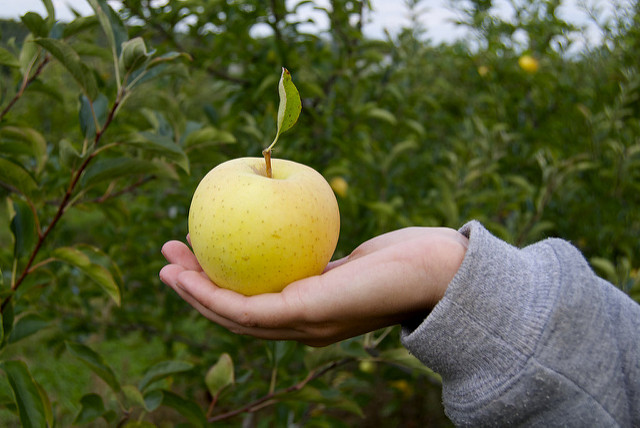Why Does an Apple Fall?
PHYSICAL SCIENCES
Get curious
8 min
Video/ Slide show (8 min)
Watch a short film about astronauts living in a space station and talk about the ways their life is different from life on Earth.
Ask the students:
What would it be like if life on Earth was the same as life on a Space Station?
What things would we not be able to do?
What things would we be able to do?
Try to ensure a dynamic, lively conversation. The point is for the students to come up with as many ideas as possible without judging whether any idea is bad or not.
Get going
10 min
Experiment (10 min)
The students determine the direction of movement of objects on Earth – downward.
Ask the students:
In what direction do objects move when released from a space station, and in what direction do objects move when released on Earth?
5 min
Conclusions (5 min)
The students mark on their worksheets the direction in which objects are pulled, i.e. toward the center of the planet.
6 min
Discussion (6 min)
Talk about the factors that influence this force of attraction (gravitational pull).
Ask the students: why do you think objects and people move differently on earth to the way they do on a space ship?
6 min
Video/ Slide show (6 min)
The students watch a film and draw conclusions on how gravitational force is determined by the mass of a body.
The film shows an astronaut “jumping” on the surface of the Moon.
The most important fragment: 1:46-2:00.
10 min
Analyzing (10 min)
The students use an online calculator to calculate their weight on other planets.
Online calculator: http://www.exploratorium.edu/ronh/weight/
Get practicing
Video/ Slide show
The students watch a film showing an experiment conducted on the Moon and draw conclusions on why a feather and a hammer fall at the same speed on the Moon.
You will download zip file now.
Make sure that you have an application that opens zip files.
If not, download single materials directly from the lesson plan.
Download zip files
Download single materials

